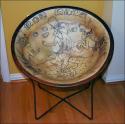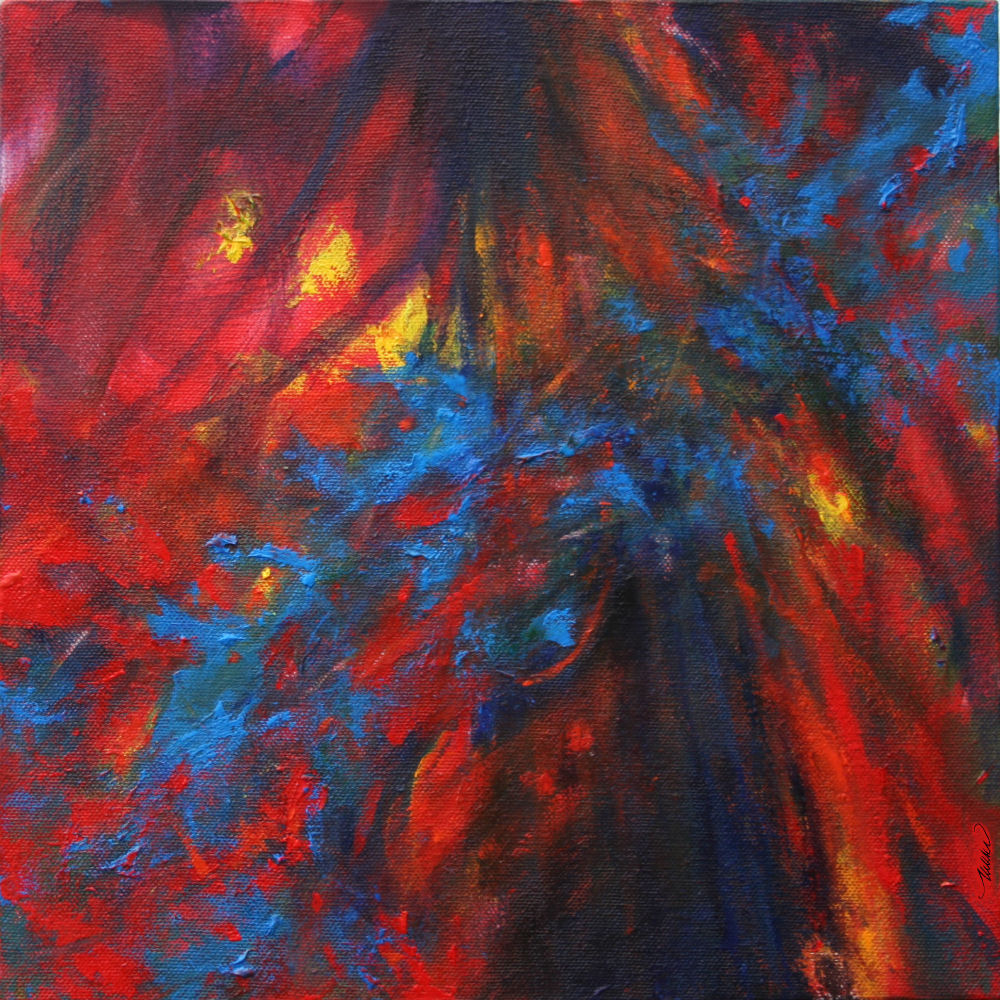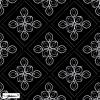inspiration
« Previous Entries Next Entries »Workshop: Cartoons to “Cool!”
Monday, February 22nd, 2010
Cartoons to “Cool!” Drawing and Illustration: How to take your abilities less seriously so they can seriously improve.
Cartoons a) use basic geometric shapes b) eliminate unnecessary details c) simplify lines and d) exaggerate key characteristics and the most obvious features of a subject. The same principles translate well to creating representational work also. Participants will learn to portray these basics in a favorite image, then have time to complete a more realistic drawing in the afternoon.
Where, When, and Sign up at: Oxide Gallery, Denton, Texas – Saturday, March 27th 10:30 a.m. – 4 p.m. If there is enough interest, a second workshop will be held Sunday, March 28th as well. Participants are welcome to sign up for both days.
Fee: $50 10:30 a.m. – 4 p.m. For ages 16 and up, any skill level (if you are 15 or 101 you will still be considered eligible) Min. – Max. # of participants: 5 – 15 Supplies: A variety of supplies will be provided, but also bring any of your own supplies that you want to work with. We will work partially from a still-life arrangement which you may choose to finish, but also bring favorite pictures, photos; images of any subject matter. Select one in particular that you hope to accomplish, or have a clearer direction toward finishing (in the manner you choose) at the end of the day.
___________________
Quote from The Zen of Seeing – seeing/drawing as meditation, drawn and hand-written by Frederick Franck:
“How, I am asked, does one draw animals cows, horses, birds? Since for me each new drawing is an adventure for which I cannot predict the outcome, is always — in a sense — my very first one, I can give no recipe.”
I’ve been asked to teach drawing since ‘way back, but with the philosophy that we are our own best authorities when it comes to creating anything, I’ve never felt even half-qualified to “teach” anything. It was a recent conversation with a couple of other artists, that propelled the energy to commit to this workshop. There are many ways to approach learning – specifically, how to draw – as many ways as there are individuals.
Good things come in threes
Wednesday, February 10th, 2010
Cycad Fossil Chair, Salish NW Pacific culture wooden whorl replica Chair, and Ancient Mayan bowl replica refurbished vintage chair, 29 x 29 x 29 inches mixed media. Read the feature article.
On exhibit and available for purchase February 11th – 27th at Visual Image Fine Art Puiblishing and Gallery Juried Show, 14320 Midway Road, Suite 300, Dallas, Texas. Come and meet all the Artists at the Opening Reception this coming Saturday, Feb. 13th, 3 – 9 p.m.
~
Good Artist Pals also come in threes
Some friendships will last forever, and how fortunate that three of mine also happen to be artists! Listed in no particular order of favoritism, each are miles apart geographically speaking and personality-wise, but they all have one thing in common: they’ll tell it like it is if you ever need a good critique, and on the flip side of the coin: a smile, a boost of energy; encouragement. I’ve posted my favorite works created by each, and highly recommend browsing each of their websites..
a) Chris Bolmeier: Happy Pigs, Oil on canvas I met Chris on the internet three years ago through Robert Genn’s Painter’s Keys newsletters. Formerly an actress and professional singer, she’s not through yet with entertaining you through humour, song and paint. She often posts mini-videos of herself singing, and her artwork is pure, straight from the gut, and some of the funniest, most original material ever. I chose this piece to share as an absolute favorite, portraying fanatically goofy pigs because it makes me laugh…not just smile, but laugh Christerically every time I look at it. In my opinion her best work is of childhood memories, and some of the baffling stuff that originates from who knows where in the infinite canvas of her mind!
b) Karen Xarchos: Restaurant mural in Ottawa, Ontario, Canada Karen and I were neighbors many years ago. We designed and painted murals together in the Ottawa area for a couple of years. Thank goodness for the internet, we’re able to keep in touch when either of us needs a good eye and some honest advice. Karen’s style and mine are vastly different; our pace, the style, the manner and we continue to learn so much from each other. She reminds me to slow down and smell the paint; her blending techniques are amazing.
Karen accepts commissions for canvas pieces like wall borders painted at home, then cleverly installs them with wallpaper paste so home owners can remove the work and take it with them when they relocate. My favorite work of Karen’s are the murals depicting work of the Masters, which are enjoyed by customers dining in many of the Greek and Italian restaurants in the Ottawa area.
c) Virginia Wieringa: Prayer, mixed media collage Virginia and I met about four years ago on an Artists’ interactive website, wetcanvas.com, and I think she still participates there under the avatar name “Veedubya”. I’m positive she’d love to meet you there too. Virginia has well-developed drawing and painting abilities and currently experiments intuitively with mixed media collage. Her work, no matter what the media, reflects her open-mindedness and strong sense of spirituality. Formerly an Art teacher, she’s fun to write to because she puts up with my inner-most silly self and doesn’t hold back her own. My favorite work of Virginia’s are the subtly symbolic collages, and some of the more vivid, energetic paintings that are about two phases pre-Realism.
Baking is an art
Monday, December 21st, 2009
In honor of my French Canadian mother-in-law who used to bake the best pies every year at Christmas time, and who is now in the advanced stage of Alzheimer’s, I decided to bake Tourtiere. I only tried making crust once before, but it was more like an edible jigsaw puzzle. TV ads for brand-name shortening imply that flaky crust is a good thing, but it should probably stay on your fork long enough to reach your mouth. Making pie crust is not for sissies! Well, don’t despair my fellow bakers…as long as it ends up tasting good (using a tablespoon to get the job done) it’s the thought that truly counts.
The Evolution of Communication
Tuesday, November 3rd, 2009
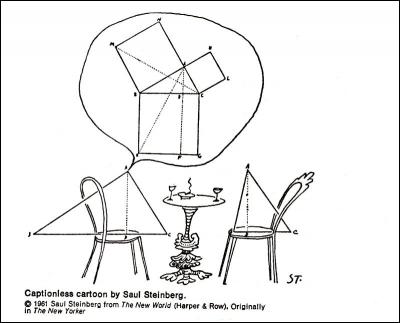 The title of a work of art can help sell it, and captions can complete our understanding of a picture, but the most successful works of Art manage well without an explanation. Our visual senses – sight and insight – have a language of their own. Upon viewing anything, multitudes of information are presented and understood simultaneously, almost instantly. With or without color, images are powerful, possibly even more than words, because with the development of human communication, pictures came first. It’s now widely accepted that symbols marked the origins of written language across the world.
The title of a work of art can help sell it, and captions can complete our understanding of a picture, but the most successful works of Art manage well without an explanation. Our visual senses – sight and insight – have a language of their own. Upon viewing anything, multitudes of information are presented and understood simultaneously, almost instantly. With or without color, images are powerful, possibly even more than words, because with the development of human communication, pictures came first. It’s now widely accepted that symbols marked the origins of written language across the world.
It takes much less time to perceive than it does to write about it. For a hands-on illustration of this, draw a simple Smiley Face, and note the time that it takes to draw it. Afterward write down everything that comes to mind about that icon; what it means, other general impressions and associations. Although this is a familiar icon with clear connotations, possibly something we see every day now, plus almost all of us have drawn it at some point, within seconds of describing it you will realize how much longer it takes to interpret as quickly into words. Harvey Ball, the original artist of the Smiley Face icon must be flabbergasted that succeeding generations would come to coin the term, “emoticons”, based on an indefinite number of facial expressions that spawned from the first, including animated ones that wink and cry, and more.
Essentially, full comprehension in any language relies on those aspects of our mind’s eye: memories and imagination in order to be fully effective. Pictures appeal to our abstract, multidimensional experiences and through the emotions, allowing for individual’s interpretations. There are higher expectations for words. We assume that they alone are qualified when we’re talking on the phone and participating in online computer groups, for instance, but it actually takes extra effort for our intent to be clear when we don’t have access to the visual side of our statements. Even if we speak the same language, the words we choose and their meaning can be misinterpreted and misunderstood.
Relying on the visual aspects of learning, subjects in school are traditionally taught using chalkboards and eraser-boards, stimulating audio and visual senses. Likewise, motivational speakers often use diagrams to help get the point across. The use of imagery is rampant everywhere now. It’s extremely effective in all forms of advertising, and despite all attempts to hold on to all copyrights, if the art is relatable it spreads like wildfire on the internet. Artists of every kind are more vulnerable than ever to fraud.
Harvey Ball’s Smiley Face is a perfect example of how artists are not really in control of what they create. Generally though, any exposure is good exposure, because most people who borrow other people’s graphics or ideas still want to know who the source is. As artists it’s beneficial and constructive for us to continue moving on to the next best project and keep progressing with a lifetime of work. We have to learn to let go of the strong bond we have with the art we create. It’s personal, to be sure, but a good motto is, “There’s more where that came from”.
Along with the resources available to us now, in our progressive age of high technology and wireless everything, it’s still the Human factor that needs refining. We only need to trust intuition as much as logic, with as much emphasis on communicating our emotions as openly and explicitly as we do words and speech. Fortunately there are infinite forms of expression, and inevitably it’s a good thing that creativity is available to everyone, not just artists. Creativity thrives on challenges to communicate effectively; it always has and it always will.
More about Artists and history in the article, The Influence of History.
~
Credits: Above cartoon by Saul Steinberg (1914 – 1999) was a Romanian-born American cartoonist, best known for his work in the New Yorker magazine. Harvey Ball, Wikipedia, Smiley Face
Basic pricing strategies: Artists and the economy
Thursday, September 17th, 2009
How do artists price their work? How do artists price their work honestly, consider themselves as legitimate business persons, still with equal regard to the buyer looking for quality and a fair deal? How do artists price their work reasonably while acknowledging the responsibility we have to our trade; that is, respecting that we, in many cases, base our prices on each other’s? How do artists price their work while competing other artists, when for some, savvy marketing skills yield profits far higher than the quality of their art? (Subjective as art is, we all recognize quality…or do we?). How do artists price their work to sell in a dicey economy? How do artists price their work to sell in a dicey economy that’s dependent on the moral and ethical whims of public spending, and the consequential extremes of society?
 I have just reluctantly slashed the prices on my artwork. I’m not going to soften the announcement with a less violent description, because compromising what I feel are well-earned wages, whether adapting to economic conditions or sharing a percentage of it for any reason, is brutal. My canvases are not the only ones feeling the brush of reality these days though; I see, hear and read that a lot of artists are reevaluating how much they ask for their work. Still, I applaud those artists who continue to stand up for the principles of the unspoken “Artist’s Code”, as Homer Simpson might put it. I’m not fond of unsold art accumulating and spilling out into every room of my home though. The hope is that it will resonate with someone else besides me. It must be seen and it must be shared.
I have just reluctantly slashed the prices on my artwork. I’m not going to soften the announcement with a less violent description, because compromising what I feel are well-earned wages, whether adapting to economic conditions or sharing a percentage of it for any reason, is brutal. My canvases are not the only ones feeling the brush of reality these days though; I see, hear and read that a lot of artists are reevaluating how much they ask for their work. Still, I applaud those artists who continue to stand up for the principles of the unspoken “Artist’s Code”, as Homer Simpson might put it. I’m not fond of unsold art accumulating and spilling out into every room of my home though. The hope is that it will resonate with someone else besides me. It must be seen and it must be shared.
Andy Warhol said: “Art is what sells”.
Maybe the average art enthusiast doesn’t know how we derive prices for our work. Maybe many artists don’t stop to dissect their decisions either. The prices of art in galleries worldwide are inconsistent, confusing and often irrational, and who is authorized to price artwork like that anyway? (Ideally it should be the artist). There are so many variables. I’m probably going to miss naming a few here because methods for pricing vary from artist to artist, hobby or career, and if their art is in the form of products or services. Costs of materials and time spent are considered, and price differences with regard those two factors have everything to do with the quality of time spent and quality of materials. Skill levels, concepts, originality, to some extent size, (ie. sculptures, murals), and if it’s for sale in a home studio in Rocky Mount, North Carolina or a high-end gallery in New York City…and most artists will tell you that above all, the final price has to “feel” right. For some strictly structural Art-minds, feelings in art don’t have a leg to stand on – but in actual fact they have two legs (the human thing). The most unpredictable, nonsensical thing is that even if the artist makes an impact while alive, their older work may be worth much less than the most recent, but when the artist dies, prices of their earliest works may increase.
Will Sing For Feathers, 8 x 10 inches, traditional graphite drawing scanned, drawn digitally, printed, process repeated
As we gain experience, confidence toward change and experimentation, and progressively improve our development as Artists, theoretically we should be able to charge more, which is why “mature” artists naturally feel they deserve to be paid more. Case in point: me. The price I initially wanted to charge for “Dancing With Trees” was $7,500.
It seems like a lot to be asking for those unfamiliar with all that painting or other forms of artwork involves. Time seems to be the most accountable factor in producing it. After viewing the artwork and the price, the most common question is: How long did that take you? It’s a fair question, because for most jobs, time input equals amount charged; a predictable amount of money is paid in exchange for a certain amount of labor within a set amount of time. If only it were that simple.
Using that system to price then, Dancing With Trees is my very best work to date, and it took almost 50 years to learn how to paint it. The price was reduced from $7,500.00 to $5,500.00. Assuming I don’t have to share a percentage of that figure with a gallery, and assuming it sells in the next year, that works out to approximately .7638888888888889 cents per hour. I feel confident that it’s worth that much. That’s a wage about as kookoo as a bird dancing for its own feathers. One day someone will come along who has an extremely large wall and agrees that the painting is worth .7638888888888889 cents per hour, and they will buy it. Each year work hangs around with me though, I decrease the asking price as new pieces are created.
Sometimes I wish I was just a bird!
The vocation of Artist is a calling, and a journey of personal growth. Who doesn’t want to do what they love, learn all the time, contribute the best they have to offer to the world, and earn a living as well? Creativity is not only what we love to do; it is a deeply-rooted habit, a compulsion and an addiction of the very best kind. Art is connected intimately with our lives so we continue to make “stuff” no matter what, and preferably, the artists’ judgment of its’ value will be trusted. In my revised Price List I’ve made a good effort to be fair to the buyer while at the same time remaining true to myself.
Post script, 2016: Well, such is life — due to the economy, and a taste of humble pie, I have since lowered the price of Dancing With Trees 03 to $1,100. It’s still substantial enough to pay for my time and material costs, and perhaps more in tune with the reality of art sales expectations these days.
Paint Arson
Thursday, March 26th, 2009
Paint Arson, 11H x 11W x 3D inches acrylics on canvas, wrapped sides painted.
Frame unnecessary. Hang on a wall or display on a flat surface. Signed on the side so as not to impose on the composition.
Progress and process phases 1 and 2 images.
Painting, whatever the subject may be, is a journey through all kinds of unanticipated thoughts and associations; some are short and sweet, ending within 1 – 6 hours and not much more than a visual, but some are packed full of adventure that isn’t even realized until surfacing from a few hours of work.
A new jar of Cadmium Red medium hue was just the thing to reboot, then re-route some old habits I was falling back into, like over-working paintings. Trying a new color invigorates the work process like nothing else can, adding certain life to the results as well. Incorporated as a base, straight out of the tube or mixed with your usual palette, a new color can change everything.
Rules, and Bridges to Your Own
Friday, October 31st, 2008
 I think that a painting is more than the sum of its parts, but it’s the parts that have more to teach.
I think that a painting is more than the sum of its parts, but it’s the parts that have more to teach.
Some of the details in this painting are kind of groundbreaking for me, and new things I tried will be applied to future paintings, but with an honest and unbiased eye toward it, from a distance it looks like just another landscape. That seems to be the general opinion about most landscapes; being the most popular genre of painting, they are so common they need a second glance and closer study in order to be fully appreciated. Anyway, with this one I’m now pleased with the efforts, but when I started painting this one I had no intentions of posting it, mainly because it’s my interpretation of a postcard, commissioned by a neighbor.
The neighbors thoughtfully collect our mail and water the garden whenever we’re away, even when not asked, so when they requested a painting to be copied from a postcard of his home town in France I cringed (you know, about the copying thing), but then agreed. With no deadline demanded there was plenty of time to wrap my head around this project, and I took it. I still wanted to do a good job despite my strong convictions about copying, and waited for a time when I felt ready to do my best – because the first few strokes are as important as the last.
 There are decent arguments for and against a “right time” for things, and if a job needs doing immediately I have no problem doing it immediately, but I was thankful to have a little more time without the pressure to visualize this one.
There are decent arguments for and against a “right time” for things, and if a job needs doing immediately I have no problem doing it immediately, but I was thankful to have a little more time without the pressure to visualize this one.
I came to terms with the thing by finally just starting it, and the rest of this blog entry explains how that taught me more than my last five paintings all together.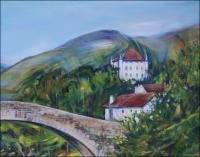
Once I let go of all the over-thinking about ethics and integrity, while resolving to make it my own I got lost in the most important part of anything you create: the work; that zone – we all want to get lost in The Zone! It turned into a really interesting, fun learning opportunity.
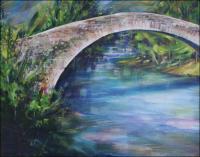 There are a lot of slogans, terms, traditions, quotes and art-myths passed along through generations of artists. We absorb them over the years and they gradually play a part in forming our opinions and our work habits to some extent. Impulsively we set up walls that can get in the way of seeing and discovery.
There are a lot of slogans, terms, traditions, quotes and art-myths passed along through generations of artists. We absorb them over the years and they gradually play a part in forming our opinions and our work habits to some extent. Impulsively we set up walls that can get in the way of seeing and discovery.
We need assignments like this that challenge us to break free from rules, if only temporarily…rules that may be fine for others but may prevent us from exploring the avenues that lead to our own personal best.
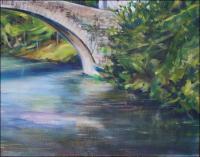 There’s a lot of competition in the Art Biz, a surplus of advice, group lessons, suggestions, and strong opinions about what art is and isn’t, what you should and shouldn’t do, and even a kind of unspoken underground rating system that some people have, pinpointing what style or motivational source is better than another.
There’s a lot of competition in the Art Biz, a surplus of advice, group lessons, suggestions, and strong opinions about what art is and isn’t, what you should and shouldn’t do, and even a kind of unspoken underground rating system that some people have, pinpointing what style or motivational source is better than another.
 The point here is: whatever the initial source is that gets you painting or creating something, then use it. If it feels right for you then it is right for you. There are things in each painting, successful or not, that bridge all our efforts into the next. The act of working is valuable above all, whatever it is or however it’s done. The value you hold for yourself translates into your work that, if successful, may also become valuable to someone else.
The point here is: whatever the initial source is that gets you painting or creating something, then use it. If it feels right for you then it is right for you. There are things in each painting, successful or not, that bridge all our efforts into the next. The act of working is valuable above all, whatever it is or however it’s done. The value you hold for yourself translates into your work that, if successful, may also become valuable to someone else.
Christerical
Sunday, September 28th, 2008
 Besides being a place to share creative processes and sell and promote my own Art, if this blog can help a fellow Artist in any way, then it serves the best possible purpose.
Besides being a place to share creative processes and sell and promote my own Art, if this blog can help a fellow Artist in any way, then it serves the best possible purpose.
There’s a commercial on TV – I think it’s for life insurance – where the generosity of one stranger is seen by another, then that person helps someone else who in turn passes kindness along, and on it goes. Artist Chris Bolmeier is one of those rare people who inspires exactly that sort of automatic generosity. Chris features interviews promoting other Artists and offers her award-winning blog entitled Christerical in a sensitive, light-hearted manner.
One of her recent paintings, Blue Tree is about the most intelligent painting I’ve ever seen done by a modern Artist. I truly mean that. First of all, she has the audacity to paint a blue-leaved tree with all the sincerity of a Realist. That alone reflects her bold, fun and quirky nature. Beyond that, the genius of the painting is in those branches. On the left a branch juts out and gives the impression that it’s connected to the trunk while it is also conveniently part of the forest in the background. The centrally located, furthest branches also recede into and are the establishing focal point of distant trees.
These seem like such simple solutions, but this is the kind of thing that makes Artists envious that they had not come up with it themselves…like me for example! The envy is short-lived however, because it melts away in her light-hearted responses to her “million friends”. Unfortunately Blue Tree is not for sale, but at least prints are. I highly recommend that you become Friend million-and-one!
 A while back Chris came up with a brainy idea and created the Artists’ affiliate program. Gallery owners and Art groups charge Artists at least 20% of profits if work sells, and it’s not surprising to be asked to share an unreasonable 50% with others who sell our work or provide the venue. To participate in the AAP, an Artist only needs the permission of fellow Artists to earn 20% of profits from the sale of any work if they are linked to promoting it. This requires some honesty and trust from all parties involved, but this is part of the intrigue I think.
A while back Chris came up with a brainy idea and created the Artists’ affiliate program. Gallery owners and Art groups charge Artists at least 20% of profits if work sells, and it’s not surprising to be asked to share an unreasonable 50% with others who sell our work or provide the venue. To participate in the AAP, an Artist only needs the permission of fellow Artists to earn 20% of profits from the sale of any work if they are linked to promoting it. This requires some honesty and trust from all parties involved, but this is part of the intrigue I think.
I have just learned that October 25th is International Artist Day. Looks like the event has been celebrated in Chicago for twelve years already. What a great idea to publically celebrate our vocation by positioning an offical day for it annually! In that spirit I acknowledge a few other Artist friends I really appreciate: Patricia Gay Stonehouse, Karen Xarchos, and Virginia Wieringa, listed in the order we met.
Patricia Gay (Gay for short) and I became fast friends during a Canadian government Small Business program in 1989.  As an extremely creative person she also offered vital strength and support, helping me organize the legal end and official side of my business. At the time I was swamped with all the start-up details, manufacturing and selling faster than I could produce. Her straightforward manner and high ideals were and are invaluable. With full-time priorities as a grade school teacher in Ottawa, Ms. Stonehouse sells her Millinery Vaults, pictured right: cleverly designed, stackable transparent hat boxes, mainly wholesale in quantities through the internet.
As an extremely creative person she also offered vital strength and support, helping me organize the legal end and official side of my business. At the time I was swamped with all the start-up details, manufacturing and selling faster than I could produce. Her straightforward manner and high ideals were and are invaluable. With full-time priorities as a grade school teacher in Ottawa, Ms. Stonehouse sells her Millinery Vaults, pictured right: cleverly designed, stackable transparent hat boxes, mainly wholesale in quantities through the internet.
 I worked with Karen Xarchos during the late ’90s/early 2000’s back in Canada. At the time demand was extremely high for in-home and model home custom-designed wall murals. Karen was a neighbor whom I knew was an Artist, but we did not meet until I finally walked across the street and suggested we take on the backlog of work orders together. Although our styles are very different we designed and painted together for about two years. It was such a nice change collaborating with someone else. We also did faux finishing, all the rage at the time, with or without accompanying murals. Some of those jobs could only be managed by two people or they would have taken too long to complete.
I worked with Karen Xarchos during the late ’90s/early 2000’s back in Canada. At the time demand was extremely high for in-home and model home custom-designed wall murals. Karen was a neighbor whom I knew was an Artist, but we did not meet until I finally walked across the street and suggested we take on the backlog of work orders together. Although our styles are very different we designed and painted together for about two years. It was such a nice change collaborating with someone else. We also did faux finishing, all the rage at the time, with or without accompanying murals. Some of those jobs could only be managed by two people or they would have taken too long to complete.
 Mural Artists are under a lot of pressure to produce work quickly; it’s pretty brutal work, and physically, mentally, creatively exhausting. It’s also everything opposite to that – the challenges are always rewarding somehow, and an Artist has the opportunity to do what they love and learn many skills within a short period of time. Cheers! to Karen because she is still doing murals. Desiring to stretch in new directions, she has started to paint assignments on canvas in her home studio rather than work on-site so much, then installs the pieces like wallpaper when done. The best things I’ve learned from Karen are to slow down, evaluate, and give more attention to finishing details. She does the most amazing writing with brushes and a steady hand!
Mural Artists are under a lot of pressure to produce work quickly; it’s pretty brutal work, and physically, mentally, creatively exhausting. It’s also everything opposite to that – the challenges are always rewarding somehow, and an Artist has the opportunity to do what they love and learn many skills within a short period of time. Cheers! to Karen because she is still doing murals. Desiring to stretch in new directions, she has started to paint assignments on canvas in her home studio rather than work on-site so much, then installs the pieces like wallpaper when done. The best things I’ve learned from Karen are to slow down, evaluate, and give more attention to finishing details. She does the most amazing writing with brushes and a steady hand!
Virginia Weiringa and I met on wetcanvas.com, an Artists’ interactive website.  Though our views and missions differ superficially, basically our hearts and Arts are in the same place, and we create with the fundamental inspiration that most Artists do: expressing, learning and hoping to encourage others through our work. It’s a beautiful thing to watch other Artists as they stretch and grow and to witness their work evolve. In the two short years since I’ve known Virginia, it’s been exciting to watch her Art career sky-rocket to fame in Michegan, U.S.A., with one exhibition after another in churches, hospitals and local galleries. She is probably the most gracious person I know, and that over-rides any aversion to organized religion I may have, a topic so personal and elusive to define I would not normally bring it up on my website, but since meeting Virginia she has given me pause to consider the larger, universal aspects of life in general. Life is large, we can be sober-minded and hard-working but still have a lot of fun, and Life is beautiful; that we agree on, and these are the messages that come through all of Virginia’s Artwork.
Though our views and missions differ superficially, basically our hearts and Arts are in the same place, and we create with the fundamental inspiration that most Artists do: expressing, learning and hoping to encourage others through our work. It’s a beautiful thing to watch other Artists as they stretch and grow and to witness their work evolve. In the two short years since I’ve known Virginia, it’s been exciting to watch her Art career sky-rocket to fame in Michegan, U.S.A., with one exhibition after another in churches, hospitals and local galleries. She is probably the most gracious person I know, and that over-rides any aversion to organized religion I may have, a topic so personal and elusive to define I would not normally bring it up on my website, but since meeting Virginia she has given me pause to consider the larger, universal aspects of life in general. Life is large, we can be sober-minded and hard-working but still have a lot of fun, and Life is beautiful; that we agree on, and these are the messages that come through all of Virginia’s Artwork.
I strongly encourage other Artists to sign up on Chris Bolmeier’s “Sell my Art” list. It makes so much sense to support a fellow Artist rather than give money to someone who has invested nothing toward creating it. If you’re interested in adding your name, listing your work and reciprocating, or purchasing any of it please contact me or Chris…or hey, start your own AAP network.
Design Inspiration
Sunday, July 27th, 2008
My Dad recently gave me a few Art books of his. I remember browsing through them when I was younger. He always left his books out laying around on the tables, intending to plant the “drawing seed” in me, and it worked. One of the books Is about the art of M. C. Escher. What a mind! You can’t help but flip through pages of art like that and not be inspired.
 This week I was also organizing my photos of leaves, seeds, and bark that I took specifically because of their outstanding design. Looking through the books plus my photos compelled me draw a few designs I’ve had in mind for a couple of years. I may paint some large one-of-a-kind cushion covers using a few of the best.
This week I was also organizing my photos of leaves, seeds, and bark that I took specifically because of their outstanding design. Looking through the books plus my photos compelled me draw a few designs I’ve had in mind for a couple of years. I may paint some large one-of-a-kind cushion covers using a few of the best.
 There is no substitute for a good old fashioned pencil, but it’s sure fun to play with the Paint Shop Pro effects, cut and paste, repeat patterns. The drawing combined with computer play have me appreciating Escher’s work so much more. He did not use computers at all.
There is no substitute for a good old fashioned pencil, but it’s sure fun to play with the Paint Shop Pro effects, cut and paste, repeat patterns. The drawing combined with computer play have me appreciating Escher’s work so much more. He did not use computers at all.
She sings and she paints…
Thursday, June 26th, 2008
Chris Bolmeiere calls herself an Accidental Artist. Previously a professional actress, she still sings and posts the songs on her blog. Her “accidental” oil paintings are colorful, energetic and expressive. Her methods of painting are rather impromptu: she paints, scrapes away, applies more then removes more, and somewhere along the way a successful painting emerges.
Her crude, straight-from-the-heart illustrations of childhood memories are hilarious; one might be inclined to label them Naive Art, but in no way is Chris naive. This “accidental” Artist is honest and direct with her approach to all of the Arts; painting, writing, singing, whatever, has little fear and is full of fun. Multi-talented, and as the name of her weblog implies: she’s Christerical!
Not only that, if you sell her work she’ll give you 20%….so, If you buy this painting from Chris and saw it here first, please let her know. I’ll give you 10% for telling her, because otherwise you might not…meaning you get 10% off and we’ll all come out winners.
« Previous Entries Next Entries »




